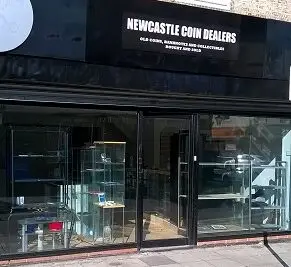A ‘store of value’
A store of value is an asset that retains its value over time. The asset can be used to buy the same amount of goods, in the future, as it can today. Coins can be used as a ‘store of value’ because they are easy to store and transport. However, the value of coins can deteriorate over time with periods of inflation.
Gold and Silver as Stores of Value
Gold and silver have been used as ‘stores of value’ as they are precious metals that are rare, durable, and have a high intrinsic value. Therefore, gold and silver coins can be useful as a store of value to protect against the effects of inflation.
Gold and silver are less likely to lose value over time compared to paper money. This is because paper money is fiat currency which does not have intrinsic value.
Fiat Currency
Fiat currency is a currency that is not backed by any physical commodity, such as gold or silver. Instead, its value is derived from the government that issues it and people’s faith in that government. Paper money is the most common form of fiat currency.
Disclaimer
It is important to realise that no investment is risk-free. The prices of gold and silver can fluctuate, and there is always the risk of a loss. Investments are often diversified to reduce the risk of incurring a loss. Effort has been made to make sure of the accuracy of the information. However, readers are advised to make their own decisions.
Spot price for precious metals
The spot price is the market price, for a precious metal, such as gold or silver. It is the price for the immediate delivery of the metal. The price is determined by the demand and supply, of the metal, in the market. These factors explain fluctuations in the market price.
Demand and Supply
If there is more demand than supply, of the metal, then the spot price will increase. However, if there is more supply than demand, then the price will fall.
The Economy
If the economy is strong, then investors are more likely to buy silver or gold which will increase the spot price.
Inflation
If inflation is high, then the value of money is reduced. Therefore, people want to invest in precious metals which are a store of value.
Interest rates
Speculators are more likely to buy precious metals when interest rates are lower. This is because they offer a better return than savings accounts. The purchase of the metal increases its price.
Summary
The spot price is a guide to what you pay for gold or silver. The actual price you pay varies according to the dealer that you buy from, and the form of metal purchased. For example, the price of metal varies depending on whether it is a coin or a bar of gold.
Also, if you buy a silver coin from a shop then you would pay a premium over the spot price. This is because the dealer has to pay for the cost of buying the silver, storing it, and selling it to the customer. In addition, the price the customer pays is dependent upon on the type of coin bought. A limited edition coin, which is rare, will have a higher premium than a more common coin.
The Spot price for precious metals
The spot price of gold and silver, in the UK, can be found on websites such as the Royal Mint and the LBMA website.
On the 10th of October 2023, the spot price of silver in the UK was £17.79 per ounce and the spot price of gold was £1,515.07 per ounce. An ounce is about 28 grams.
On the 10th of October 2023, the price of a Britannia Silver Coin (1 oz) was £19.99, the price of a Maple Leaf Silver Coin (1 oz) was £20.99, and the price of a Gold Sovereign (1/4 oz) was £399.99.
Numismatics
Numismatics is the study of coins and the collection and valuation of rare coins. The topic also covers a wider range of items such as tokens, paper money currency and medals. However, the main interest here is modern numismatics which is the study of coins from 1700 onwards when there were machine-made coins. The Royal Numismatic Society is the United Kingdom’s main society for numismatics while the British Numismatic Society promotes the understanding of British coin collecting. Today, numismatics is a popular interest in England and the UK. The British Museum has a world-famous numismatic collection, which includes coins, medals, and banknotes from across the world. Similarly, The Royal Mint is a place to learn about numismatics. It has a visitor centre in Llantrisant in south east Wales and provides exhibitions that explain the history of British coinage.
The History of British coinage
After the Norman conquest in 1066, the Normans introduced a new silver coin, called the penny, which remained the main English coin for over six hundred years. In the 16th century, King Henry VIII introduced the gold pound sterling. The pound sterling has been the official currency of England and the UK ever since. Over the centuries, coins have been used to commemorate major events and people. For example, the Royal Mint issued a crown coin to celebrate the coronation of Queen Elizabeth II in 1953.Newcastle Coin Dealers sells coins such as the silver Britannia or the gold full sovereign. The shop is in North Shields which is to the east of Newcastle upon Tyne in the north east of England.

